

August to October
Back To Top
Back To Top
Back To Top
Back To Top
Back To Top
Back To Top
Back To Top
Back To Top
Back To Top
Back To Top
Back To Top
Back To Top
Back To Top
Back To Top
Back To Top

Website © Caroline Beevis

August to October

|
This time I took a digital SLR camera with me, in the hope that I would be able to capture something of the wondrous night sky and desert. Astronomically it was an exciting visit, as there was a lot happening in the sky! We had a partial lunar eclipse on September 7th, as well as a partial solar eclipse on the 22nd. Pluto had been demoted to the rank of 'dwarf planet'. 'Smart 1', the lunar observation satellite, ended its days by being deliberately crashed into the Moon's surface on September 3rd. And on September 9th, myself and several members of staff at the lodge watched Space Shuttle Atlantis launch live on 'NASA TV' on my laptop in the rangers' room! Please scroll to the right, as well as down, as there are many images! I hope you enjoy them.
I have since returned to the lodge twice more, once for three months, and again for a month. I hope to return there again. |
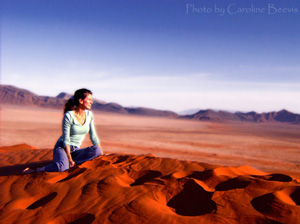 Click picture to view my second visit! |
|
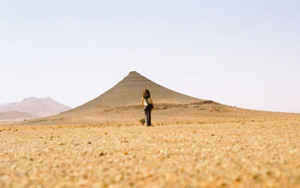 Click picture to view my first visit! |
Sossusvlei Desert Lodge from Space |
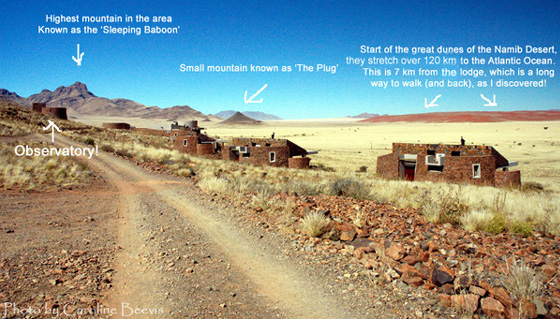 The lodge & surroundings |
 My friends, the lodge staff and choir |
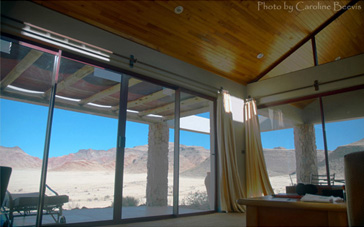 View from Room 10 |
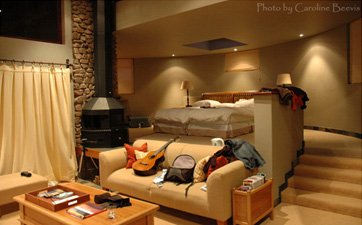 Room 10 interior (excuse my mess!) |
 Panoramic view from top of mountain behind lodge. It took me about an hour to climb early one morning. And about 20 minutes to descend on my bottom! Although I couldn't walk for about three days afterwards, it was worth it for the view! |
 Crescent Moon over Mountains |
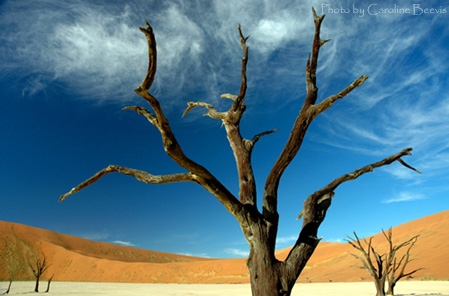 Dead Vlei Trees & Clouds |
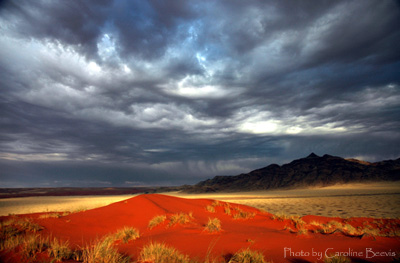 Namib Rand Landscape |
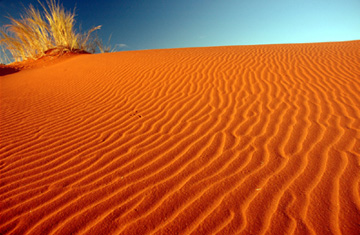 Dune ripples |

The Southern Milky Way - Only ever fully visible from below the Equator, this is the heart of our galaxy. We stand near its edge, looking in along a swirling spiral disc of billions of stars - our star city. This photo was featured in the February 2007 edition of 'Astronomy Now' magazine. |
 The central region of the Milky Way |
 The Observatory |
 The Telescope & deck - A Meade LX200 Goto Classic. She's almost ten years old now! |
 Me at the Telescope |
 Waxing Crescent Moon August 27 |
 ...28th |
 ...29th |
 September 2nd |
 3rd |
 4th |
 Full Moon Sept 7th |
 Section of the Moon midway through the partial lunar eclipse Sept 7th 2006, as viewed through telescope with camera attached to eyepiece! |
Planets, though not to scale! |
 Jupiter |
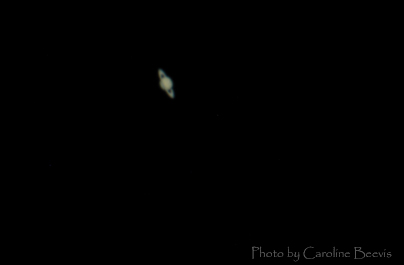 Saturn |
 Uranus |
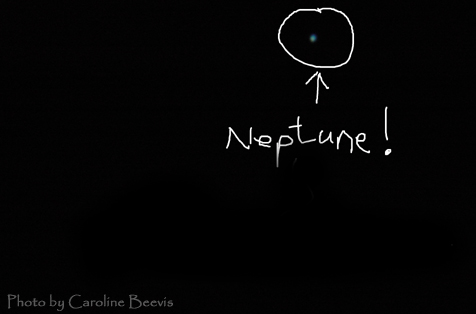 Neptune |
 '47 Tucanae' - a globular cluster of hundreds of thousands of very old stars, (10 billion years or so), visible to the eye as a faint misty patch. Its light has taken over 13 thousand years to reach our eyes |
 'Omega Centauri' - Brightest globular cluster, containing over a million stars. It is so far away though! We see it now as it was 18 000 years ago. |
 The famous 'Jewel Box' open cluster. 'Only' 7600 light years distant. Contains a hundred or so very young stars ('only' 7 million years old!) |
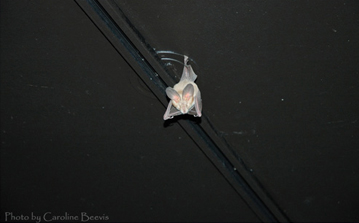 My nightly visitor, who got shut in one night! |
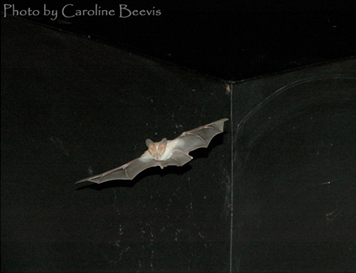 She soon woke up though! |
 The Ring Nebula (M57). What is known as a 'planetary nebula', which is in fact a very old star which has puffed off its outer layers into deep space, creating beautiful, yet short-lived objects of a few tens of thousands of years. The Ring Nebula lies over 2000 light years from us, and its star is believed to have shed its outer layers about 20 000 years ago. The blue ring-effect will eventually fade. |
 The Sculptor Galaxy (NGC253) At a distance of over 10 million light years, I was amazed at the detail my very primitive equipment produced of this galaxy. |
 The Sombrero Galaxy (M104) Even more remote, we see this galaxy as it was over 50 million years ago. We will never know what it looks like, or what's happening there, at this present time. |
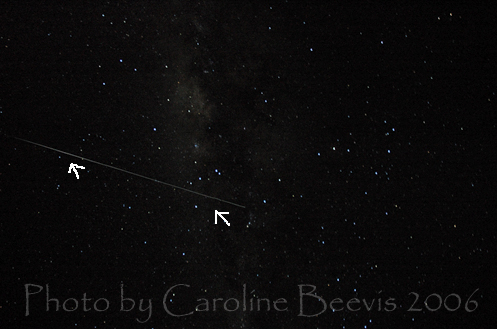 We had an overhead visit from the Hubble Space Telescope on August 17th. I opened the camera shutter at the lower arrow, just as it was passing through the tail of Scorpius. |
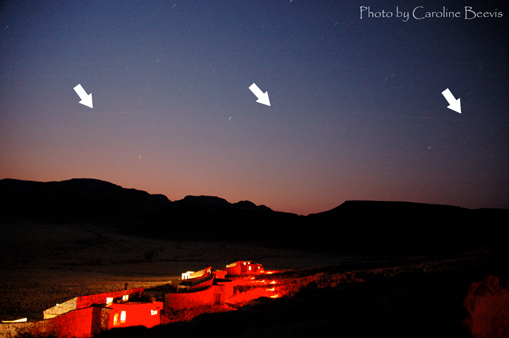 ....As well as the International Space Station on the 14th. |
 Partial Solar Eclipse - September 22nd 2006 This eclipse could be seen over some parts of the Southern Hemisphere. It was a total annular, meaning that there was a narrow track across the Earth where the Moon alomst totally blocked out the Sun. However, this occurred mid-ocean, and we land-dwellers could see just this chunk of the Sun being eaten by the Moon. |
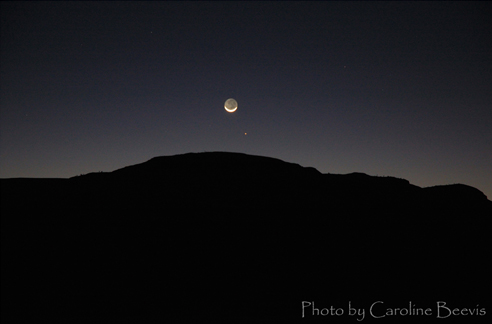 The Moon & Mars Aug 25 |
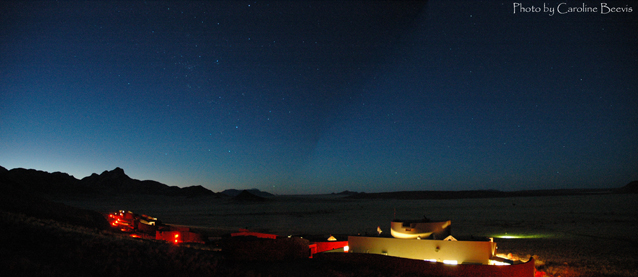 Morning Stars. The Southern Cross is low in the sky to the right of the high mountain peak (the 'Sleeping Baboon') |
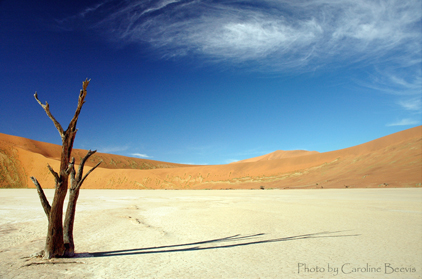 Dead Vlei. |
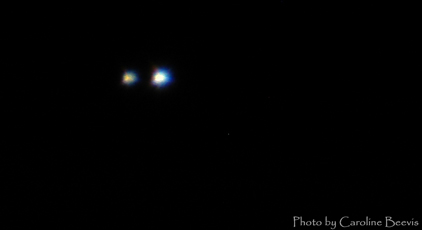 Alpha Centauri A & B, our nearest stellar neighbours, (after the Sun). They are two stars which appear as one to our naked eyes. The telescope clearly shows there are two! They seem close, yet in fact they are 25 the Earth-Sun distance apart from each other, taking approx. eighty years to revolve around each other. They are just over 4 light years from us. Only visible in the SH. |
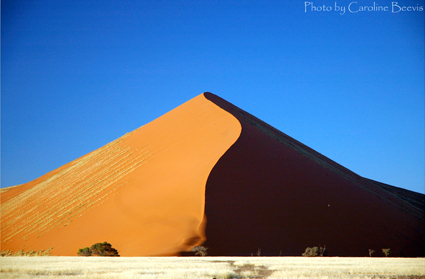 Dune 43, Sossusvlei |
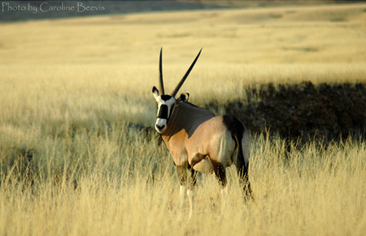 A lone male Oryx (Gemsbok) |
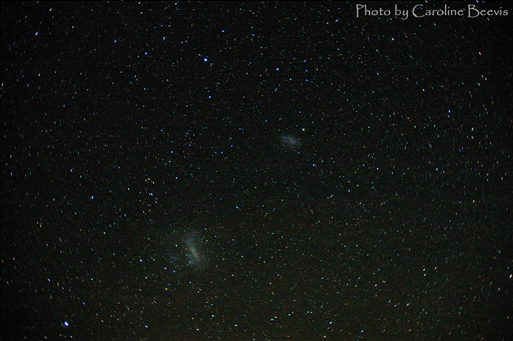 The Magellanic Clouds. Only visible from the Southern Hemisphere, they are two 'satellite' galaxies orbiting around The Milky Way at a distance of between 180 and 200 thousand light years. |
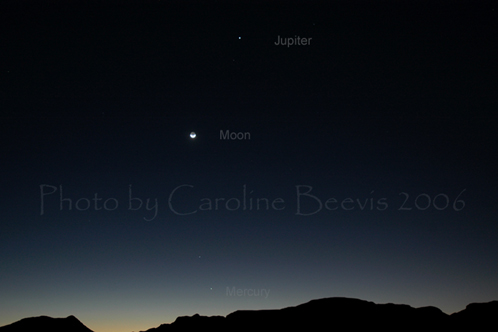 Jupiter, The Moon and Mercury in the twilight sky, September 26th. |
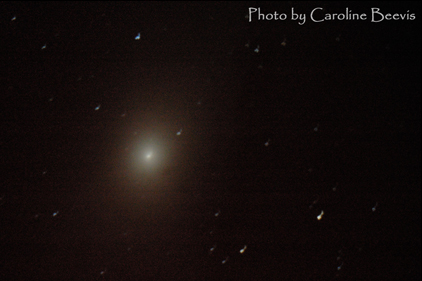 The Andromeda Galaxy Peaking over the northerly mountain behind the lodge, it was just visible at 2am on August 28th. Worth staying up for, despite freezing temperatures (nothing a hot chocolate couldn't cure though!) |
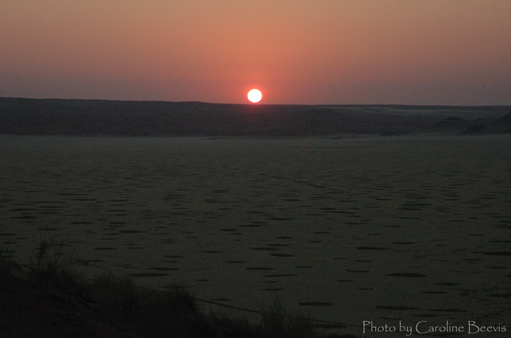 And of course our very own solitary star, the Sun |
All photos © Caroline Beevis. *

Home Sweet Home

Website © Caroline Beevis